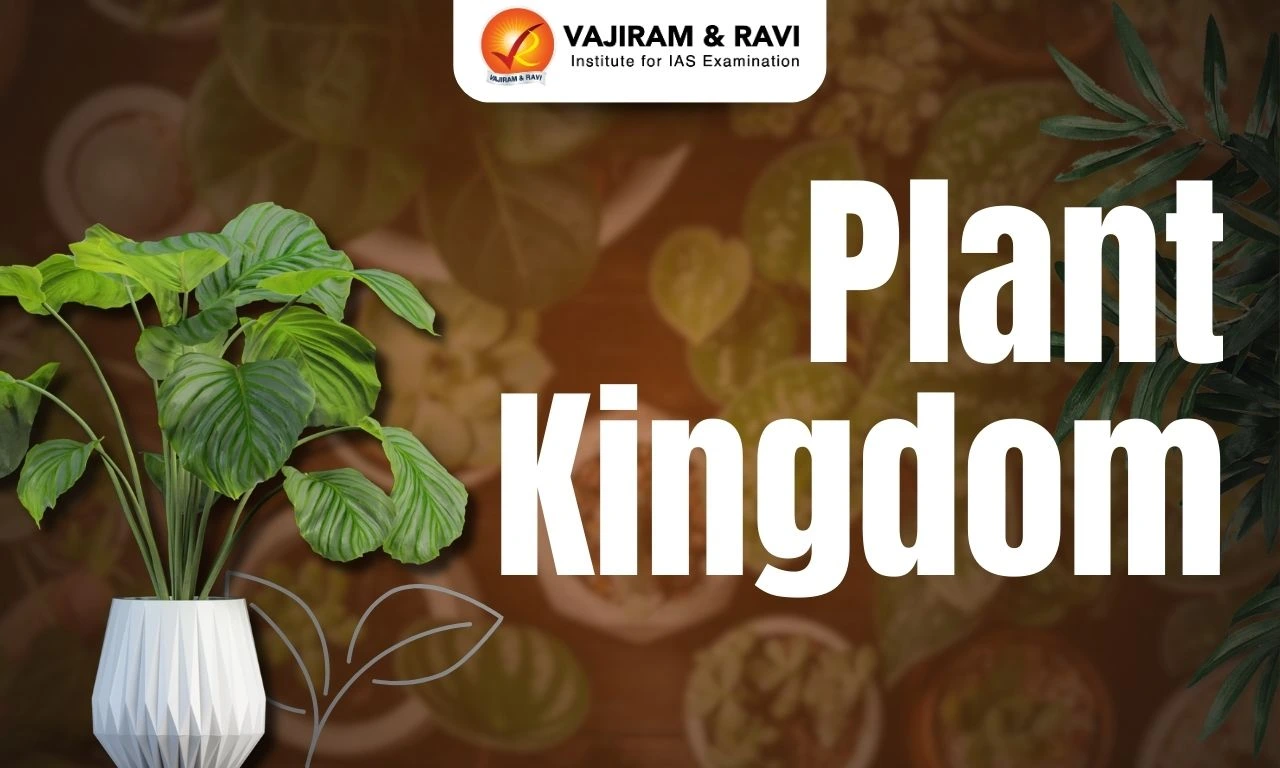The plant kingdom consists of multicellular, eukaryotic organisms that are autotrophic and contain chlorophyll. Plants are a diverse group that includes familiar organisms like trees, flowers, grasses, ferns, and mosses. There are over 300,000+ species of plants that inhabit almost every environment on land.
Plants play a critical role in ecosystems. As primary producers, they convert light energy from the sun into chemical energy through photosynthesis. This energy then flows through the food chain, supporting almost all life on Earth either directly or indirectly. Plants also provide oxygen, stabilize soil, cycle nutrients, regulate climate, and offer habitat for animals.
Evolution of Plant Kingdom Classification
Early classification systems divided plants based on growth forms into trees, shrubs and herbs. Subsequent systems incorporated internal structure and reproductive morphology.
- Systema Naturae: Carolus Linnaeus introduced the two-kingdom system separating plants and animals (1735).
Plant Classification Systems
Botanists classify plants based on shared evolutionary history and characteristics. Classification helps understand relationships and origins.
- Linnaean classification: The Linnaean system categorises plants using a hierarchy with kingdom, division, class, order, family, genus, and species, from broadest to most specific.
- Taxonomic names consist of the genus and species Latinised name.
- Phylogenetic system: It uses evolutionary relationships and DNA evidence to group plants.
- Closely related plants share a common ancestor.
- Widely used phylogenetic groups include mosses, liverworts, ferns, gymnosperms, and angiosperms.
- Economic importance: Food crops, ornamental plants, timber trees, medicinal plants, and fibre plants.
Classification of the Plant Kingdom
Based on the above standards, the Plant Kingdom is divided into the following major lineages:

Cryptogams Vs. Phanerogams
| Cryptogams | Phanerogams |
| – These are seedless plants or plant-like organisms. | – These are referred to as seed-bearing plants. |
| – Sub-kingdom in the kingdom Plantae called Cryptogamae. | – Sub-kingdom in the kingdom Plantae called Phanerogamae. |
|
– Reproduce using spores.
|
– Reproduce using seeds.
|
| – They are less evolved plants. | – They are highly evolved plants. |
Thallophyta (Algae)
Algae are chlorophyll-bearing simple, thalloid, autotrophic and largely aquatic organisms. They occur in freshwater, marine water, moist soils, rocks, etc. Based on the type of photosynthetic pigments possessed and the type of storage products, algae are classified into three major classes:
| Class | Key Features | Examples |
| Chlorophyceae (green algae) |
– Possess chlorophyll a and b pigments – Store food as starch – Cell wall made up of cellulose – Examples: Chlamydomonas, Volvox, Ulothrix, and, Spirogyra |
– Volvox |
| Phaeophyceae (brown algae) |
– Possess chlorophyll a, c, fucoxanthin – Store food as laminarin and mannitol – Cell wall made of cellulose and algin – Examples: Ectocarpus, Dictyota, Laminaria, Sargassum, Fucus |
– Ectocarpus  |
| Rhodophyceae (red algae) |
– Possess chlorophyll a, d, phycoerythrin – Store food as Floridian starch – Cell wall made of cellulose and pectin – Examples: Polysiphonia, Porphyra, Gracilaria, Gelidium |
– Gracilaria |
- Reproduction in Thallophyta:
- Vegetative Reproduction: Algae reproduce vegetatively by fragmentation. Each fragment develops into a new thallus.
- Asexual Reproduction: It takes place by producing zoospores (motile) and aplanospores (non-motile).
- Sexual Reproduction: Isogamous (fusion of morphologically similar gametes), anisogamous (fusion of morphologically dissimilar gametes) and oogamous (fusion of large, non-motile female gamete and small, motile male gamete).
- Significance: They are an important component of aquatic food chains.
- Food: Used as food (Porphyra, Laminaria),
- Industry: Source of industrially important hydrocolloids (algin, carrageenan, agar).
- Biofertilizers: Used as biofertilizers (Anabaena, Nostoc).
Bryophytes
Bryophytes include liverworts and mosses found commonly in moist and shady habitats. The plant body is thallus-like or differentiated into stem and leaf-like structures. The bryophytes possess root-like, leaf-like and stem-like structures. However, these lack true vascular tissues. Important Characteristics:
- The plant body is a gametophyte that bears male and female sex organs (antheridia and archegonia).
- Sporophytes are dependent on the gametophyte for nutrient supply.
- The dominant phase is gametophyte.
- Dependent on the water for reproduction.
- They lie in a transitional phase between algae and pteridophytes.
Bryophytes are divided into:
| Class | Key features | Example |
| Liverworts |
– The plant body is dorsiventral and thallus-like – Rhizoids present on the ventral side for attachment – Leaflike structures present on the dorsal side – Example: Marchantia |
– Marchantia  |
| Mosses |
– The Plant body is erect, slender, differentiated into stems and leaves – Leaves arranged spirally around the stem – Attached to the substratum by multicellular branched rhizoids. – Example: Funaria, Polytrichum, Sphagnum |
– Funaria  |


- Reproduction in Bryophytes:
- Vegetative reproduction by fragmentation, buds and gemmae.
- Asexual reproduction by spore formation. Haploid spores formed in sporangium undergo mitotic division to form haploid protonema or gametophyte.
- Sexual reproduction by formation of male and female gametes in antheridia and archegonia.
- Zygote formed after fertilization divides mitotically to form diploid sporophyte.
- Meiosis in sporophytes produces haploid spores. Spores germinate to form gametophytes.
- Significance: Used for packing material, production of antibiotics, and helps in soil conservation.
Pteridophytes
Pteridophytes are the earliest terrestrial plants with well-developed vascular tissues – xylem and phloem. They occupy an intermediate position between bryophytes and higher plants. Important characteristics:
- The plant body is a sporophyte which is differentiated into true roots, stem and leaves.
- Leaves are small (microphylls) or large (microphylls).
- Vascular tissues- xylem and phloem are present.
- Spores produced in sporangia are borne on sporophylls.
- Sporophylls are arranged spirally to form compact strobili or cones.
- Spores germinate to form gametophytes.

Pteridophytes are classified into:
| Class | Key features | Example |
| Psilopsida: |
– Plant body is differentiated into stem, leaves and roots. – Leaves: Small, simple, entire, exstipulated. – Stem dichotomously branched. – Xylem lacks tracheids, only vessels present – Example: Psilotum |
– Psilotum  |
| Lycopsida: |
– Includes club mosses and quillworts – Plant body creeping or erect – Leaves microphyllous, small – Sporophylls aggregated to form strobili – Xylem with tracheids only – Example: Selaginella, Lycopodium |
– Selaginella  |
| Sphenopsida: |
– Stem is jointed with whorled leaves – Leaves are reduced to toothed sheaths at nodes – Stems are photosynthetic and channelled. – Xylem are with tracheids and vessels – Example: Equisetum (Horsetails) |
– Equisetum (Horsetails)  |
| Pteropsida: |
– Plant body is well differentiated – Leaves are megaphyllous, large – Sporangia arranged in sori on leaves – Xylem contains tracheids, vessels and phloem – Example: Dryopteris, Pteris, Adiantum (Ferns) |
– Pteris  |
- Reproduction in Pteridophytes:
- Vegetative reproduction – Fragmentation, budding
- Asexual reproduction – Spores formed by a meiotic division in sporangia
- Sexual reproduction – Male and female gametes (antherozoids and eggs) formed in antheridia and archegonia on gametophytes. Zygote forms sporophyte after fertilization.
- Significance: Used as medicines, bio-fertilisers, soil binders, and ornamental plants.

Gymnosperms
Gymnosperms are seed-bearing plants in which ovules are not enclosed by any ovary wall or fruit; hence the seeds remain exposed or naked.
Important characteristics are:
- Heterosporous – Produces microspores and megaspores.
- Wind pollinated.
- Vascular tissues are present.
- Perennial, evergreen trees or shrubs.

| Class | Key features | Example |
| Cycadales |
– Plants are palm-like, tropical – Stem is unbranched, woody, covered with persistent leaf bases – Leaves are large, pinnate, circinate vernation – Roots are coralloid with symbiotic cyanobacteria – Seeds are naked and produced on modified leaf margins. – Example: Cycas, Zamia |
– Cycas |
| Coniferales |
– Mainly evergreen trees with a needle or scale-like leaves – Cones or strobili for reproduction – Wood with resin ducts – Leaves often with thick cuticles and sunken stomata – Pollen are dispersed by wind (anemophilous) – Example: Pinus, Cedrus (cedar), Abies (fir) |
– Pinus  |
| Ginkgoales |
-Only one living species – Ginkgo biloba – Leaves broad, bilobed with open dichotomous venation – Long shoots bear leaves; short shoots bear cones – Motile male gametes require water for the transfer – Seeds with foul-smelling outer fleshy layer – Example: Ginkgo, Maidenhair tree |
– Ginkgo  |
| Gnetales |
– They are Xerophytic shrubs and trees. – Leaves are simple, with scales and needles. – Cones are unisexual with reduced perianth. – Vessels are absent in the xylem. – Seeds are large without endosperm – Example: Ephedra, Gnetum, Welwitschia |
– Ephedra  |
- Reproduction in Gymnosperms:
- Vegetative reproduction: Coralloid roots in Cycas.
- Asexual reproduction: Cones or strobili-bearing microsporophylls produce microspores and strobili-bearing megasporophylls produce megaspores.
- Sexual reproduction: Microspores develop into male gametophytes containing antheridia (pollen grains).
- Megaspores develop into female gametophytes containing archegonia. Pollen grains are carried to the ovule by the wind.
- The pollen tube releases male gamete into the ovule where it fuses with an egg in the archegonium. The zygote develops into an embryo and ovules into seeds.
- Significance: Wood, resin, turpentine oil, paper pulp, ornamental plants
Angiosperms
Angiosperms or flowering plants possess reproductive organs protected by floral envelopes or perianth. Pollen grains and ovules develop inside specialized structures of the flower. After fertilisation, seeds develop inside ovaries which ripen into fruits.
Important Characteristics are:
- Flowers are enclosed by floral envelopes.
- Seeds are enclosed in fruits.
- Pollen grains and ovules are produced in specialized structures of flowers.
- Vascular tissues are present.
Angiosperms are divided into two classes:
| Class | Key features | Example |
| Dicotyledons |
– Tap root system – Reticulate venation (vein pattern classifications) in leaves. – Flower parts in 4 or 5 or multiples of 4 or 5 – Two cotyledons in seed – Vascular bundles in a ring arrangement – Examples: Rose, potato, tobacco, pea |
– Rosaceae  |
| Monocotyledons |
– Fibrous root system -Parallel venation – Flower parts in 3 or multiples of 3 – One cotyledon in seed – Scattered vascular bundles – Examples: Lily, wheat, rice |
– Liliaceae  |
- Reproduction in Angiosperms:
- Vegetative reproduction – Cuttings, grafting.
- Asexual reproduction – Production of seeds without fusion of gametes (apomixis).
- Sexual reproduction – Flower contains stamens (microsporophyll) and carpels (megasporophyll). Microspores in anther sacs divide mitotically to form pollen grains containing male gametophyte.
- Megaspore in the ovule divides mitotically to form an embryo sac (female gametophyte) containing egg cells.
- Pollen grains are transferred to stigma by agents like wind, water, animals etc.
- The pollen tube grows through style and releases two male gametes into the ovule—one fuse with an egg cell forming a zygote.
- The zygote develops into an embryo and ovules into seeds. Ovary matures into fruit.
- Significance: Provide food, fuel, medicine, timber, fibres, oils, dyes, gums, resins etc.

Plant Structure and Function
While plants exhibit a variety of forms, they share key structural and functional elements.
- Roots: Roots anchor the plant and absorb water and minerals from the soil.
- Root systems can be fibrous or taproots.
- Specialised roots may store food or enable vegetative reproduction.
- Stems: Stems provide structural support and allow vascular transport.
- Herbaceous plants have soft, green stems while woody plants develop hardy stems covered by bark.
- Modified stems include rhizomes, corms, tubers, and bulbs.
- Leaves: Leaves are the primary site of photosynthesis.
- Flat, expanded leaves maximise light capture.
- Leaf anatomy includes epidermal cells, stomata, xylem, and phloem within a vascular bundle.
- Leaf arrangements, shapes, and margins vary widely.

- Reproductive Structures: Plants reproduce sexually via spores and seeds and asexually via vegetative propagation.
- Flowers contain male and female reproductive organs.
- After fertilisation, flowers develop into fruits containing seeds.
- Cones, spores, and sporangia facilitate reproduction in non-flowering plants.
- Vascular Tissue: The xylem transports water and minerals absorbed by the roots upwards through the plant.
- Phloem transports sugars produced by photosynthesis throughout the plant.
- Together, the xylem and phloem form the vascular system that facilitates growth and structural support.
- Meristems: Meristems are tissues of undifferentiated, rapidly dividing cells that enable plant growth.
- Apical meristems facilitate primary growth at the shoot and root tips.
- Lateral meristems facilitate secondary growth and increase stem and root diameter.
- Photosynthesis: Photosynthesis converts light energy from the sun into chemical energy stored in glucose molecules.
- Chloroplasts in leaf mesophyll cells carry out photosynthesis using chlorophyll pigments, generating oxygen as a byproduct.
Last updated on June, 2025
→ UPSC Notification 2025 was released on 22nd January 2025.
→ UPSC Prelims Result 2025 is out now for the CSE held on 25 May 2025.
→ UPSC Prelims Question Paper 2025 and Unofficial Prelims Answer Key 2025 are available now.
→ UPSC Calendar 2026 is released on 15th May, 2025.
→ The UPSC Vacancy 2025 were released 1129, out of which 979 were for UPSC CSE and remaining 150 are for UPSC IFoS.
→ UPSC Mains 2025 will be conducted on 22nd August 2025.
→ UPSC Prelims 2026 will be conducted on 24th May, 2026 & UPSC Mains 2026 will be conducted on 21st August 2026.
→ The UPSC Selection Process is of 3 stages-Prelims, Mains and Interview.
→ UPSC Result 2024 is released with latest UPSC Marksheet 2024. Check Now!
→ UPSC Toppers List 2024 is released now. Shakti Dubey is UPSC AIR 1 2024 Topper.
→ Also check Best IAS Coaching in Delhi
Tags: plant kingdom quest























